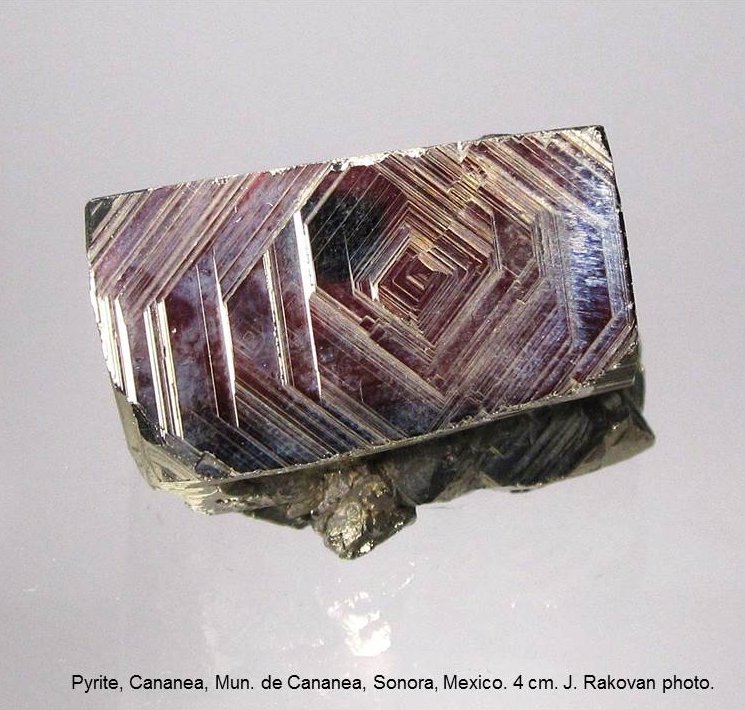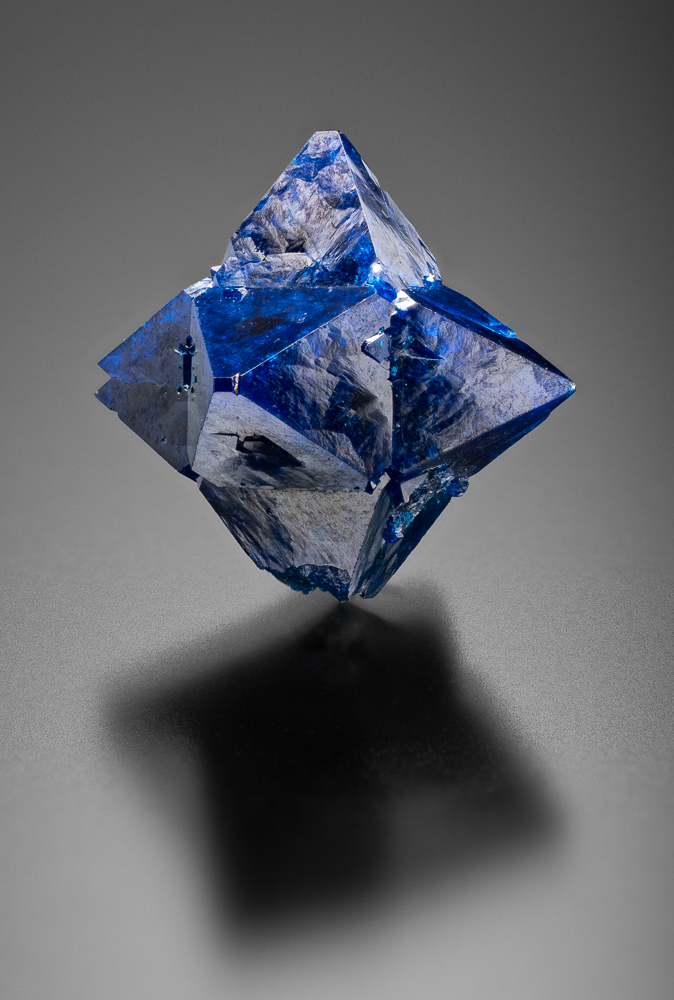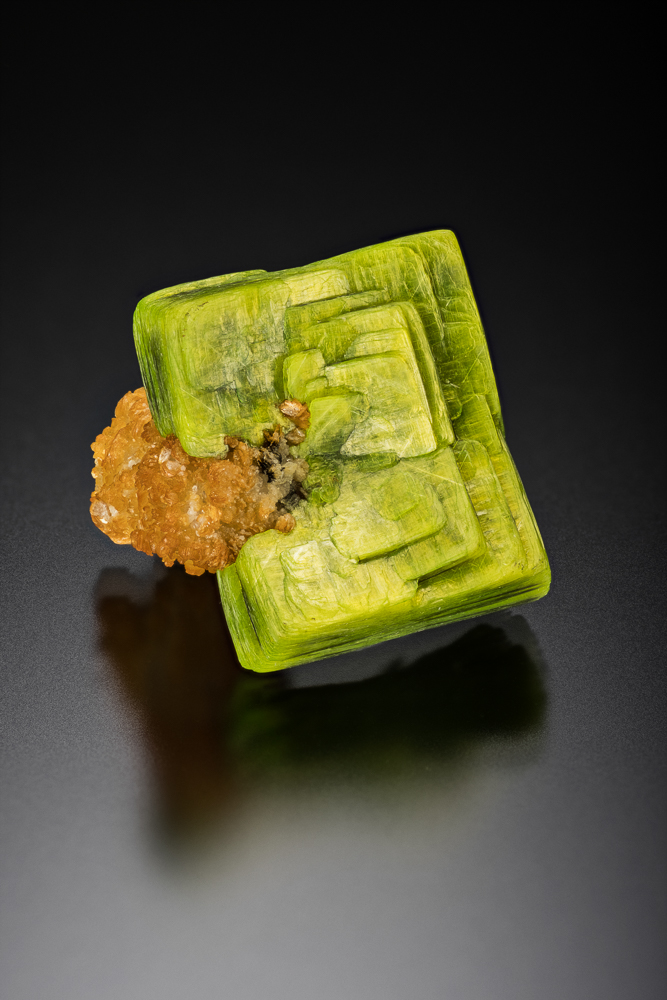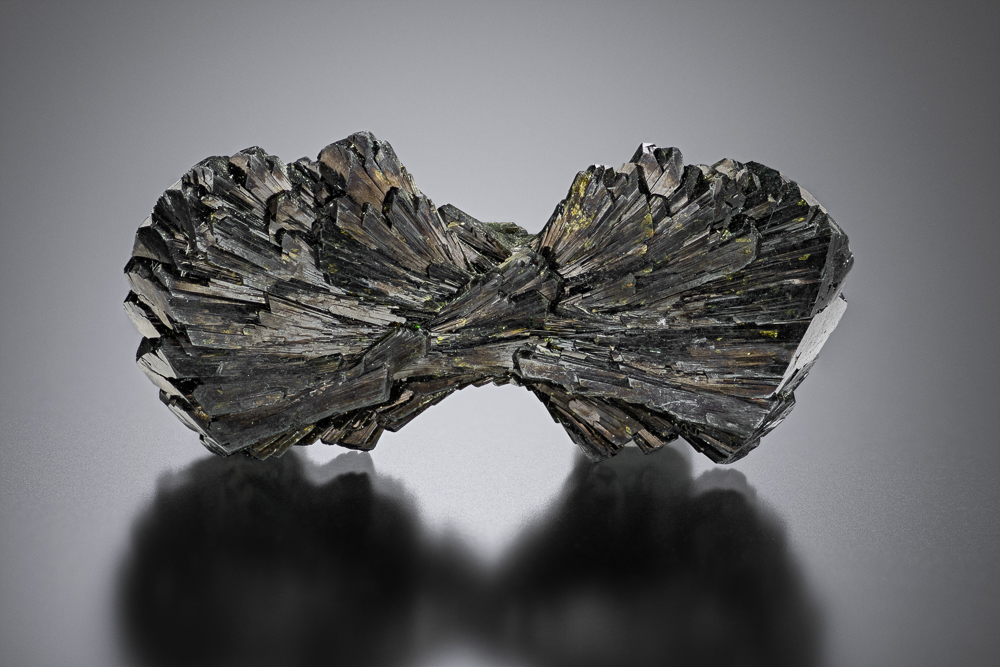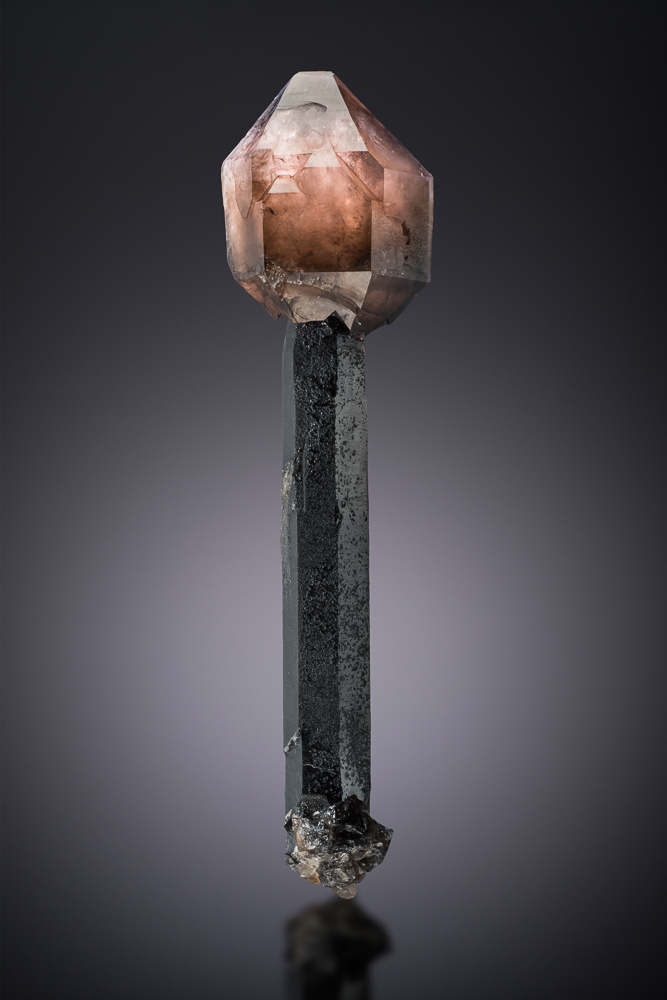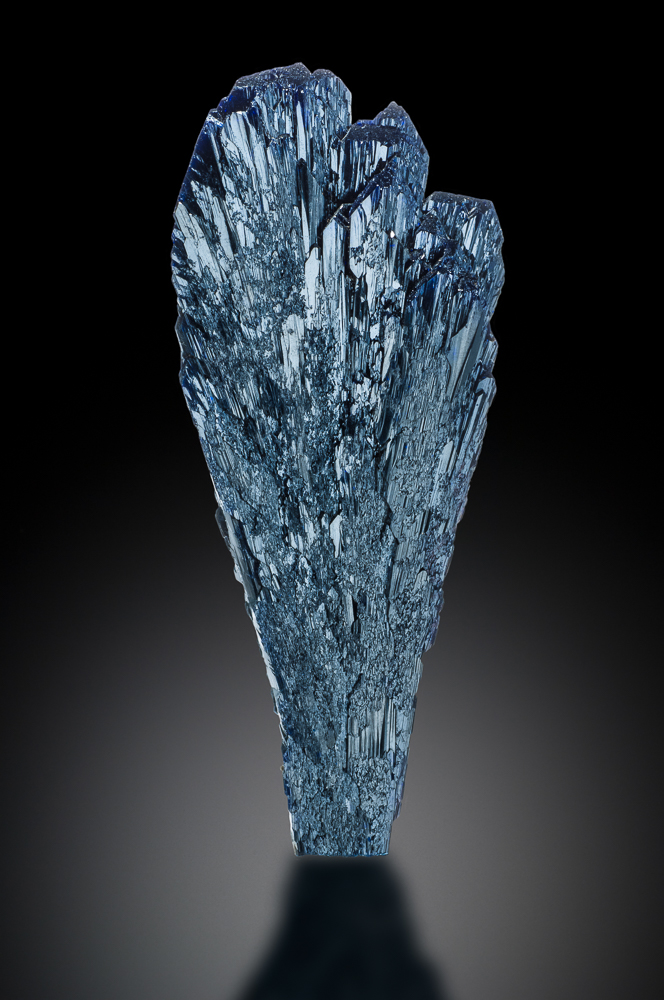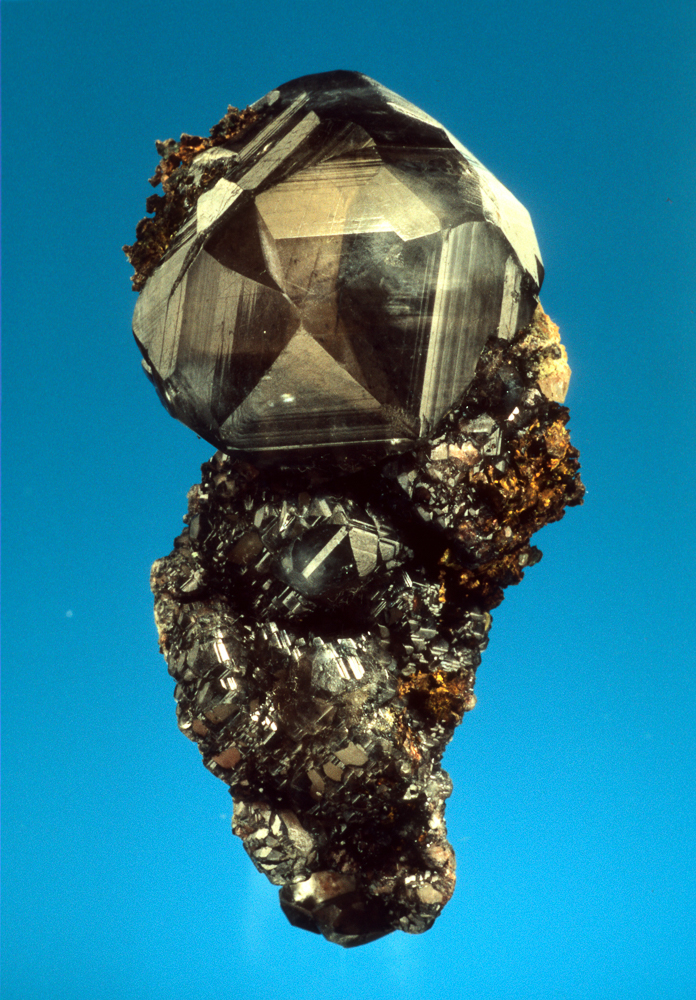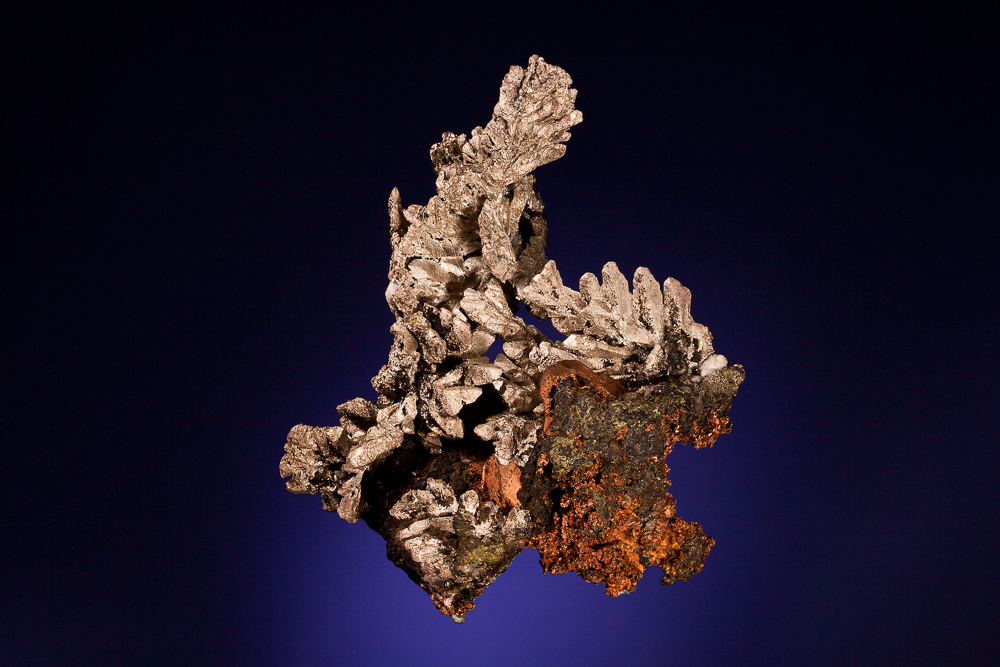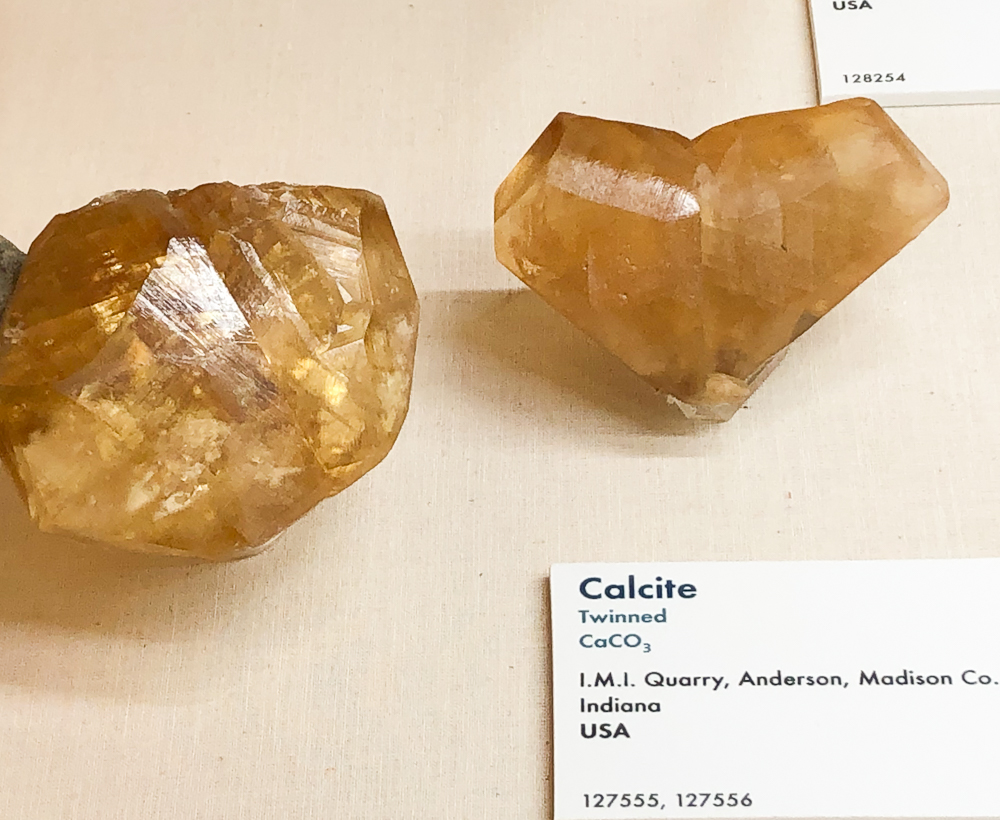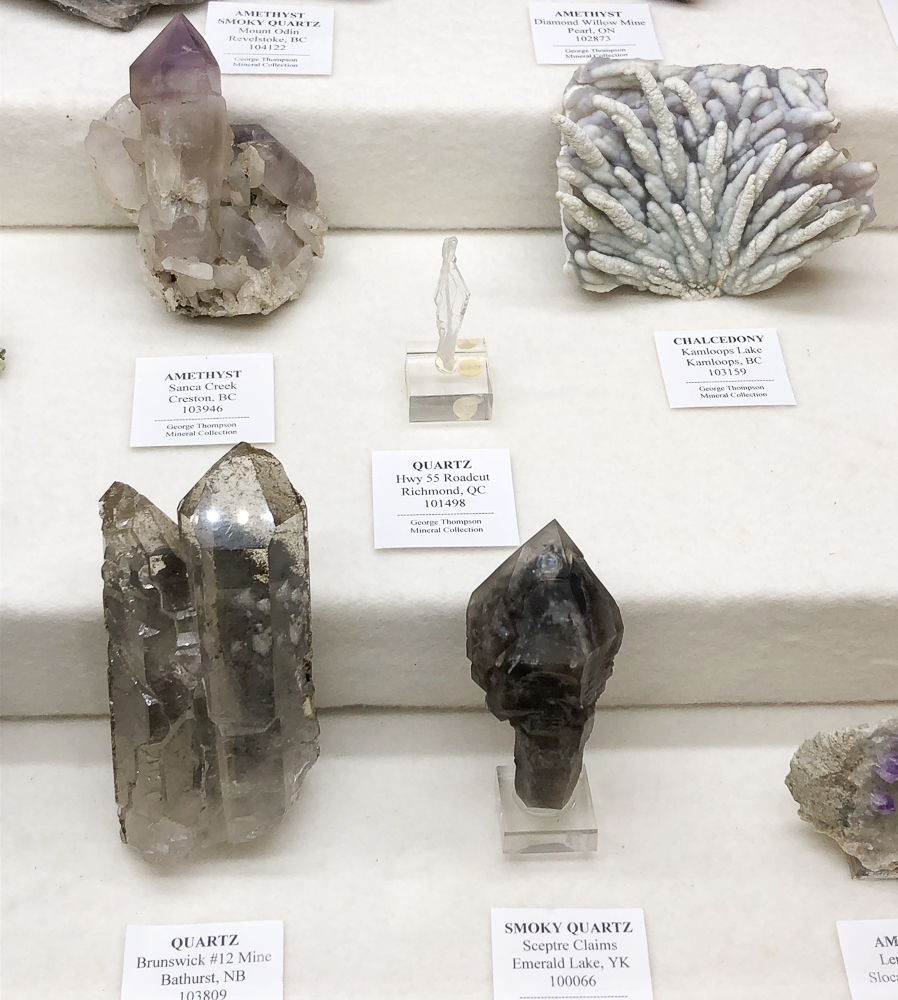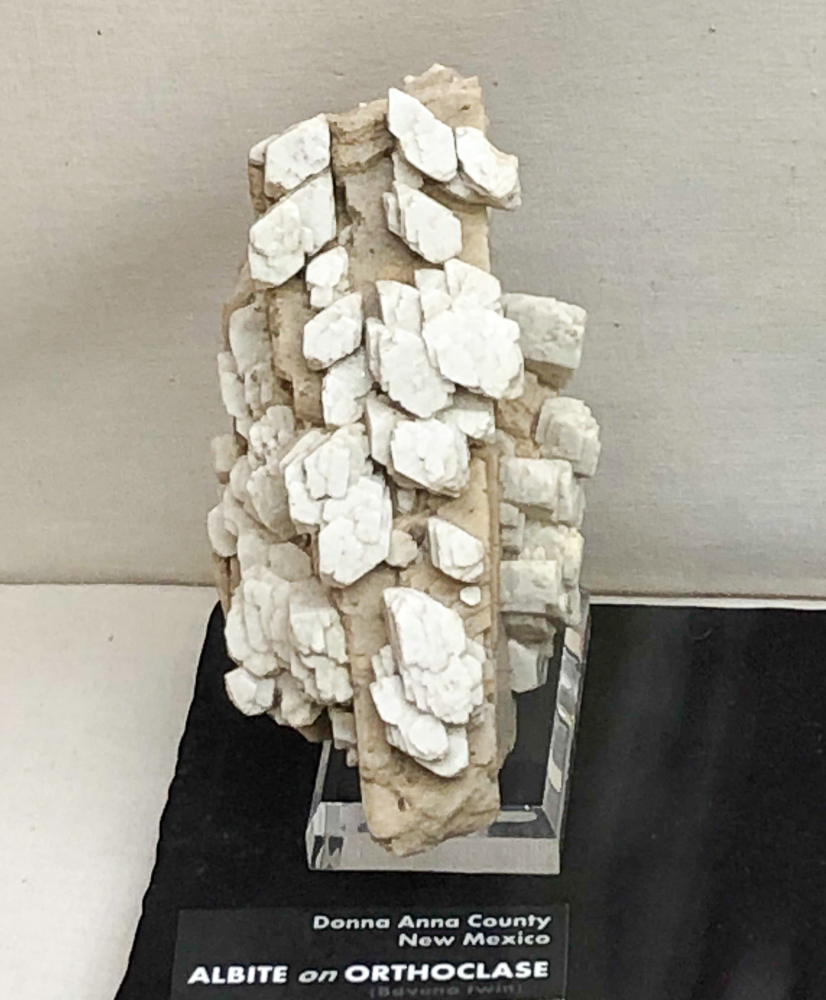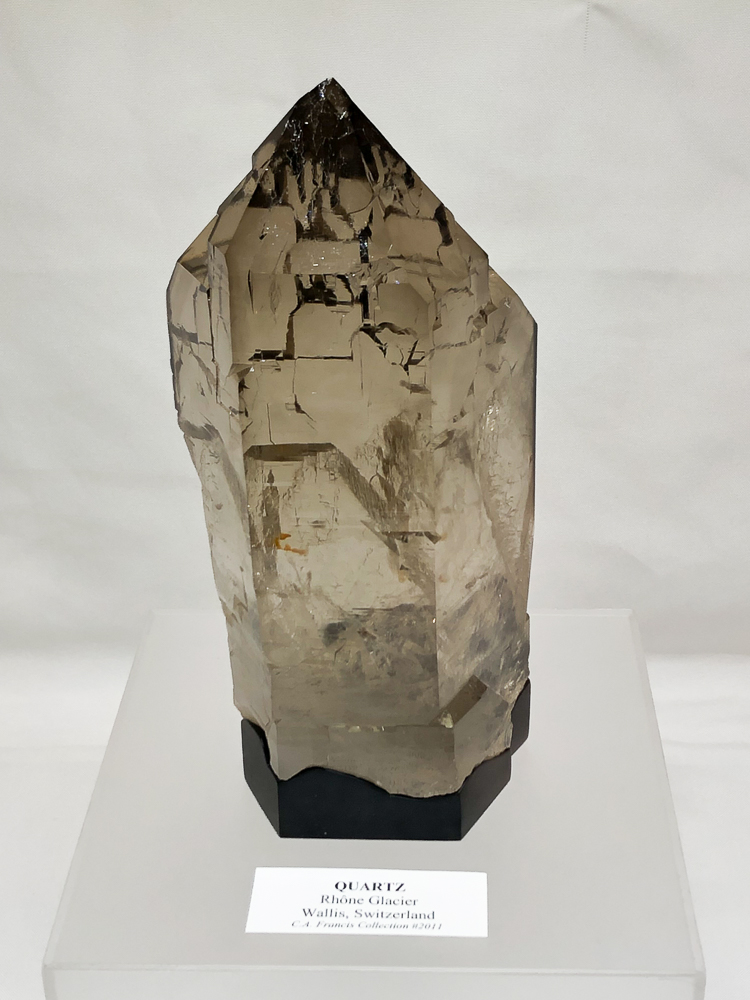Categories
Archives
As spring unfolds in this part of the world in mid-late April each year, it’s time for the Rochester Mineralogical Symposium!
Of course, the extent to which it’s spring in this region depends on exactly where you are – Rochester was further ahead and this year there was still lots of snow up here in Bancroft. Even so, the first beautiful signs of the new season were emerging. (It has been a cold spring – our furnaces out here have been on still, into June (!)).
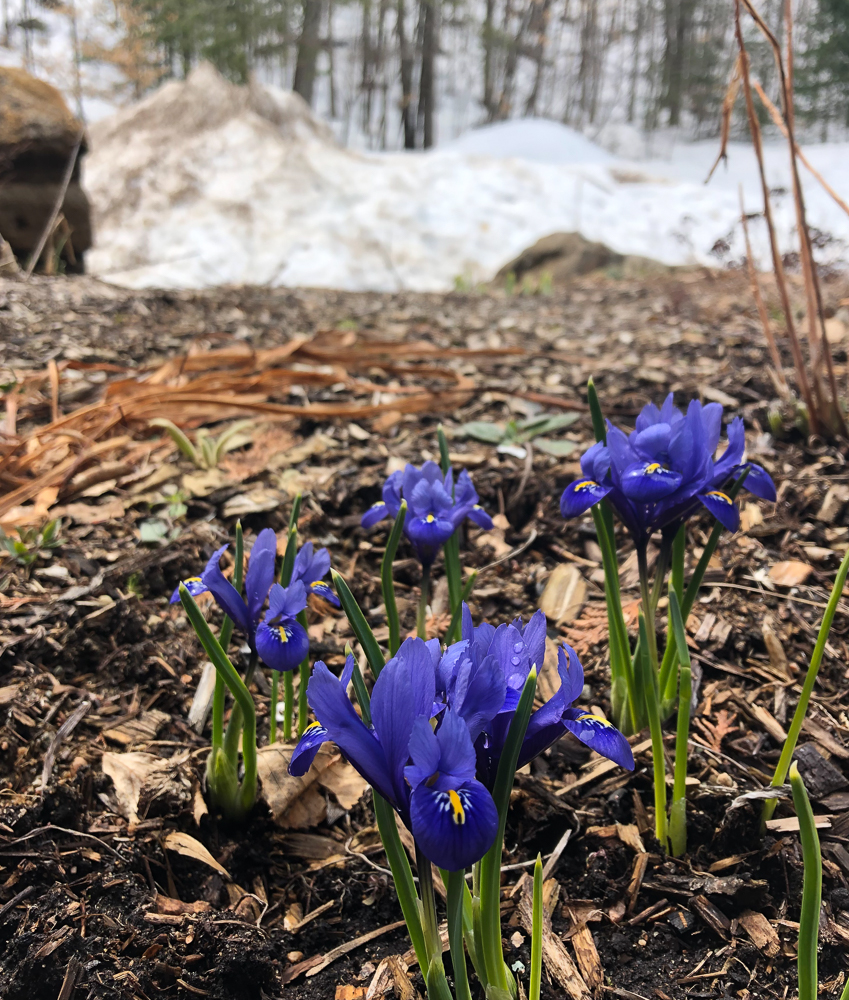
Rochester 2019 marked our 46th year.
If you are new to the Symposium, it’s a unique event. It brings together professionals and amateurs, and a complete range of subjects in specimen mineralogy. It is collegial and friendly, meant for collectors and those who love to learn about minerals. The RMS prominently features What’s New in Minerals each year. It is also a mineral show with excellent dealers set up and open when the talks are not on. It may sound scientific and formal, but Rochester is perhaps the most welcoming and inclusive mineral gathering I know. It’s a time for hanging out and having a good time with mineral friends, new and old (of course new people come every year, and if you’ve never been, make 2020 your first!). It’s possible a drink or two is shared among us, and a few mineral songs are always sung.
Rochester is not meant to be a strictly scientific symposium – it is meant for anyone who wants to learn more about minerals. At Rochester, many of the best-known mineral people of our time, mineralogists, curators, collectors (including beginners) and students, all share and learn together.
We had a stellar cast of speakers this year! We began with three talks (Thursday night and Friday morning) about crystals, given by three friends who have been experts in crystallography for a long time.
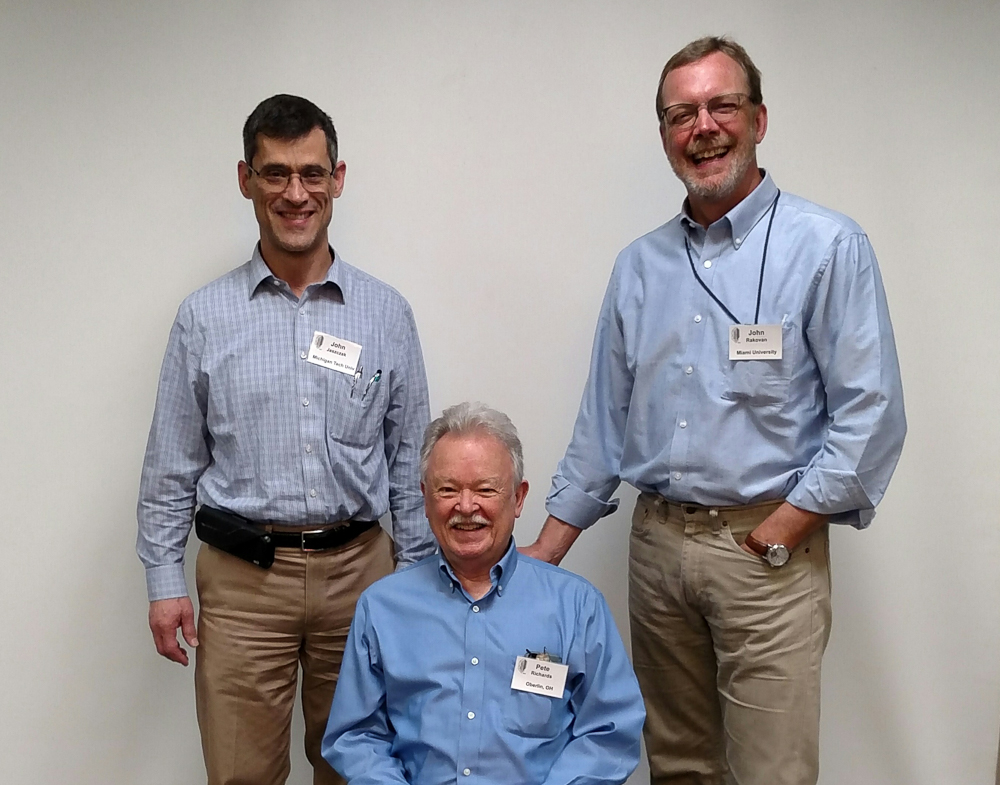
Three Crystal Rogues. From Left, John Jaszczak, Pete Richards and John Rakovan.
These three talks began with some fundamental questions and concepts, progressed into distortions and ended up teetering on the edge of the crystallography universe – I lightheartedly told our speakers they were taking us on a journey, From Cubes to Tubes.
Thursday Night
John Rakovan started us off with Crystal Growth: A Primer. He explored why it is that crystals form flat faces. It’s such a fundamental question, I’ve never thought to wonder about it (!). It’s easier to assume that we have an understanding of basic crystals if we understand the crystal classes. As a general rule, crystals have flat faces, at a macro level. However, at a microscopic level, crystal faces often display topography that can help us to understand how they grew. The short answer about flat faces is that the mechanism of growth prefers to add thin layers as a crystal grows, completing a flat layer and then beginning the next. The longer explanation as to why that is has to do with the way atoms bond to surfaces – an atom will bond much more easily if it can attach not only to the flat surface underneath, but also a step/bench on one side. If thought of as a cube, if the bottom and one side can be attached, the atom is much more likely to be bonded and stay in place, as is the next, and the next, until the layer has crept all across the crystal. Once a new layer starts, the process is repeated.

Layered growth visible inside a Panasqueira fluorapatite crystal,
both on a macro scale and an incredibly micro scale.
John Rakovan specimen and photo.
A beautiful illustration of layers on a pyrite crystal – this crystal surface is relatively flat
but with the right illumination, one can see the stepped growth pattern.
Friday Morning
R. Peter Richards opened Friday morning with a talk on Distorted Crystals. Many of you know Pete is often involved in unravelling some of the most interesting crystallographic mysteries in Mineral World. His presentation took us away from typical flat-faced, simple geometric crystal forms, into the realm of distortions of various kinds. Pete is an engaging speaker and this was a great talk!
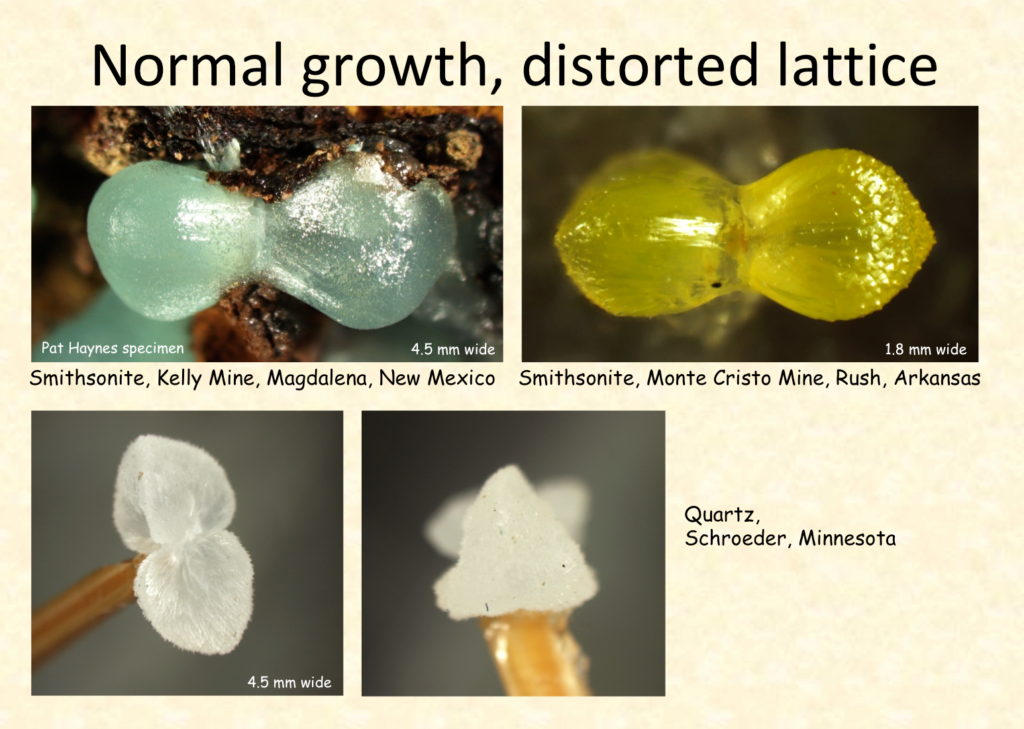
John Jaszczak then led us to the brink of the crystallographic abyss, with Criminal Minerals: Investigating Minerals that Break the Law. A subject that could easily descend into a very technical place and lose an audience, but there was no worry of that! Why? Well, other than the fact John is a great presenter in any event… he chose to explain the concepts using photographs of parked cars. Answering once and for all the age-old question (at least I’ve always wondered) can crystallographic issues be solved with parked cars…
Beginning with the illustration of a crystal on the right hand side of this slide…

Explaining, for example, that complications can result in a crystal’s growth when something shows up where it should not, within a crystal’s lattice…

Issuing a wanted-list for criminal minerals the offence of incommensurate modulation…

… you might feel like “incommensurate modulation” is a good technical place to become lost… nope, turns out parked cars can illustrate almost anything, as this one example shows.

OK, one _mineral_ example in photographs. This is cylindrite, a classic, with its cylindrical crystal morphology:

Friday Afternoon – Contributed Papers in Specimen Mineralogy
Friday afternoon at the RMS, we have Contributed Papers in Specimen Mineralogy (we typically refer to it as the “Technical Session”). Our coordinator of this session and editor of the abstracts is Sarah Hanson – she runs the call for papers, and coordinates everything to put this program together. Our call for papers is usually out in December, but start thinking about it now – if you have a paper you’d like to contribute, we’d love to see your submission this year.
The session itself is moderated by Dr. Carl Francis. Friday afternoon is packed with great 15-minute talks on a range of topics, some completely specimen-oriented, some more mineralogical. I never write at length in these blog posts about the Technical Session talks, because the abstracts from the talks are published during the year in Rocks and Minerals magazine (don’t forget to watch for them!) and they are published in the RMS Program Notes (see the links section at the end of this blog post).
However, I do feel strongly about writing a just bit about it. The Technical Session is one of the features of the RMS that makes it unique, with professionals and amateurs all contributing. For collectors, there is a lot of interest in these talks – sometimes about rare or new minerals or finds, sometimes about localities, sometimes about scientific work done to establish fakes in Mineral World. We had a high percentage of truly excellent talks given by students. The group from the Department of Geology and Environmental Earth Science, Miami University, Oxford, Ohio did a particularly outstanding job. Too often, we look around Mineral World and see fewer young people than we’d all like – these students represent a bright future for mineralogy and the science that underpins everything we enjoy in Mineral World.
Friday Night
On Friday night, Terry Huizing gave “The Variety and Appeal of Calcite”. Terry has a superb calcite collection, and this talk was full of photographs of wonderful calcite specimens. He spoke about calcite colours and crystals – with Terry’s presentation, anyone could be tempted to specialize in collecting calcite.
Terry made one point that really struck me – it’s something I had never known about calcite, and I thought it was an awesome bit of mineral learning. Many people know that calcite is known for its huge variety of crystal forms, as over 800 have been described. It’s mind-boggling. I love poring over incredible intricate calcite crystal drawings in Goldschmidt and other publications. Terry pointed out that all of these complex crystals we see are combinations of two or more of only five forms, along with any twinning that may be present: the pinacoid, prism, rhombohedron, scalenohedron and dipyramid. (!) I loved learning that! Terry illustrated these, including some Jeff Scovil photos in the following slides:
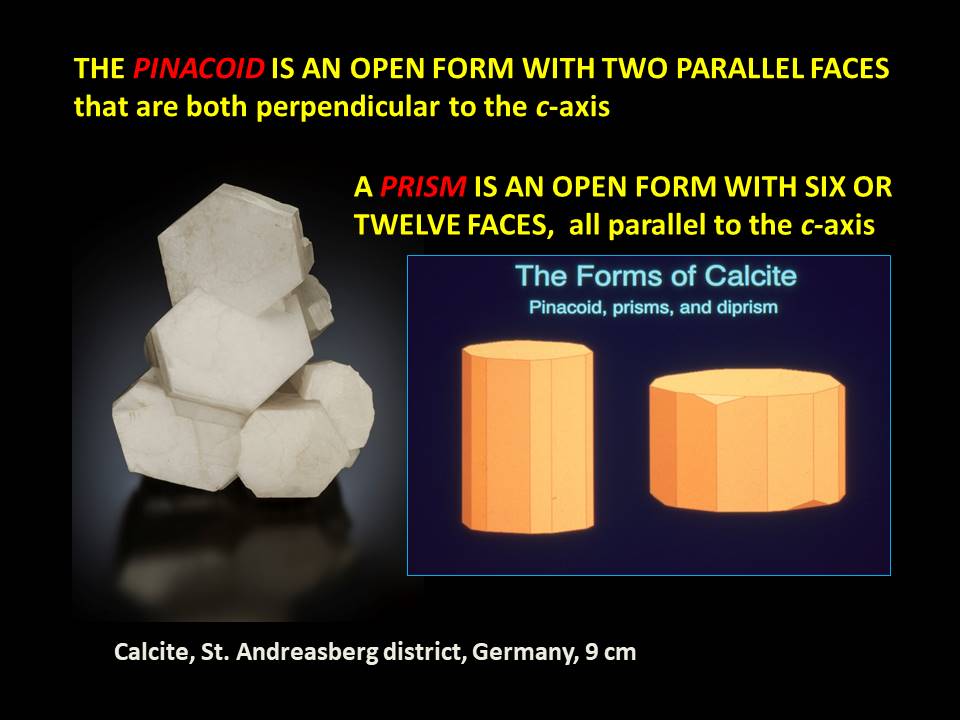
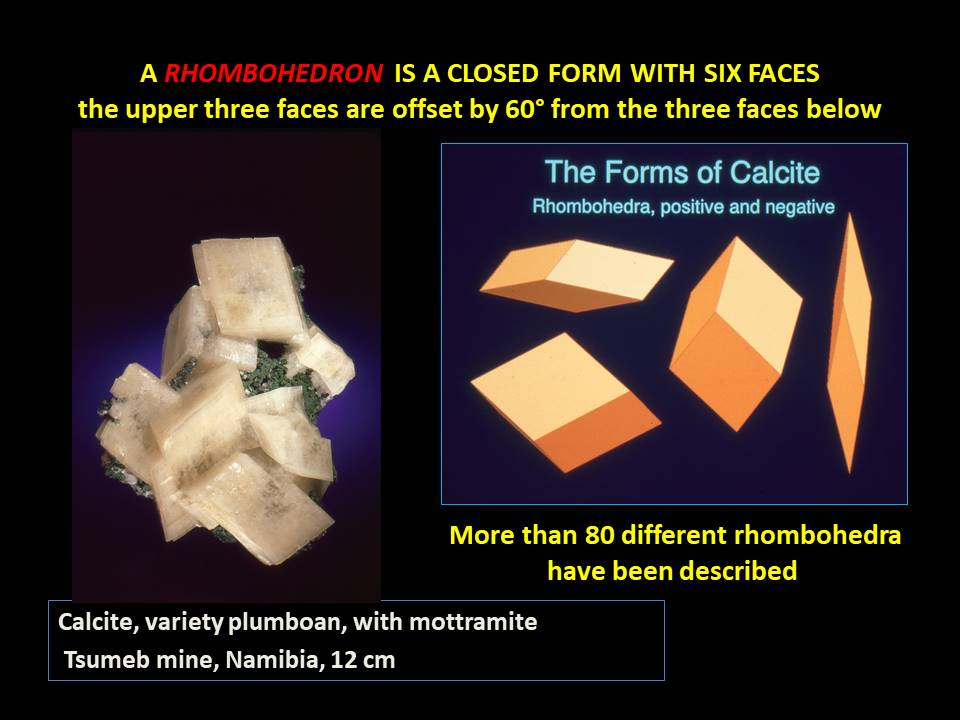
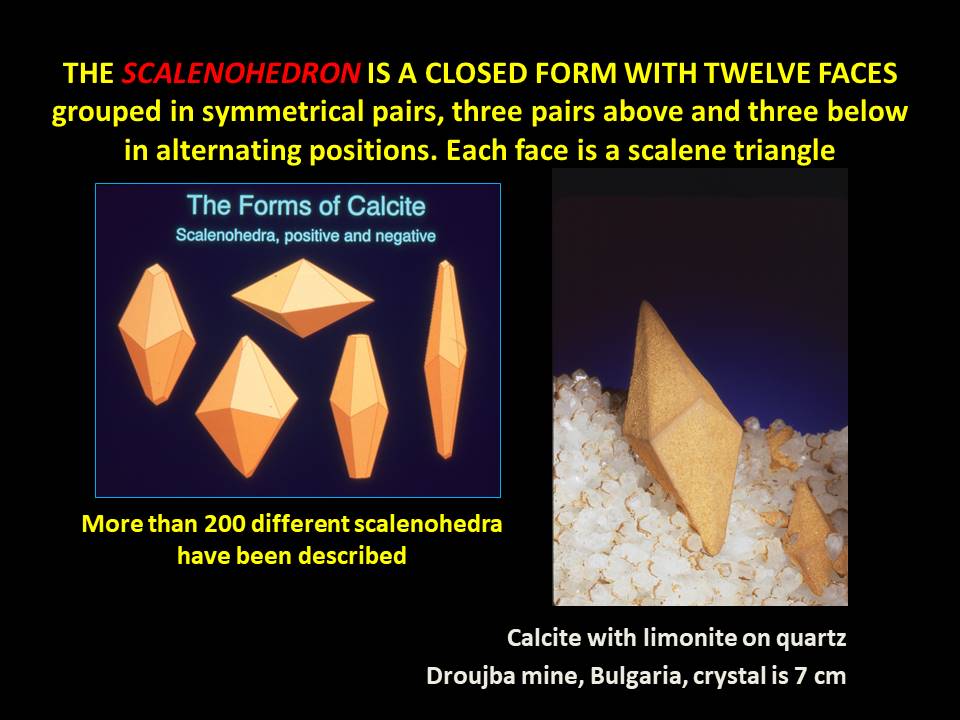
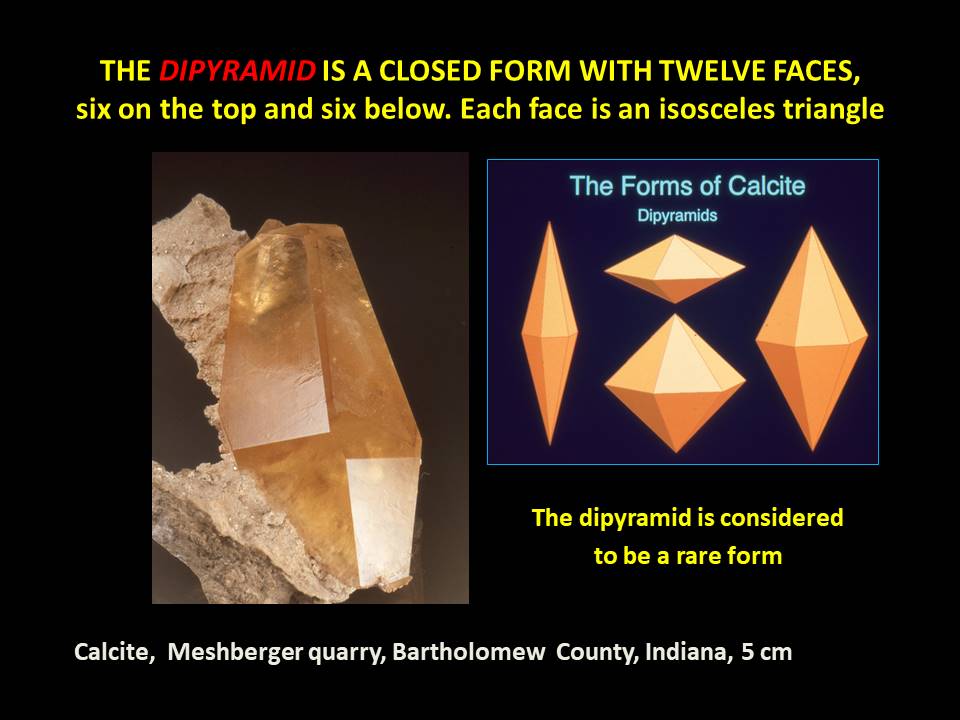
Terry’s was mostly a talk comprised of great photos of beautiful specimens, including this wonderful piece.
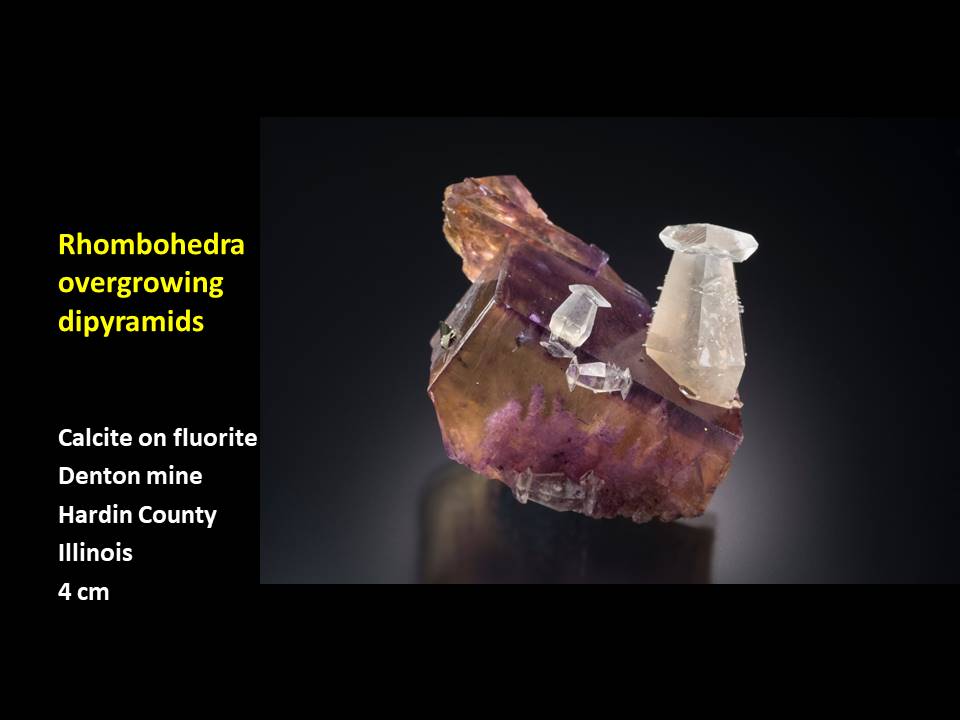
Saturday Morning: What’s New in Minerals and Localities
Saturday morning is always dedicated to What’s New in Minerals – it has been at the heart of the Symposium from the early days, and it is an absolute highlight every year. We divide the morning into Parts I and II.
Jeff Scovil has been leading Part I for 25 years (time flies!), and even after Friday night’s fun takes us all well into the night, this talk is packed every year. Of course it is: this is the world’s great and famous mineral photographer showing us fantastic photos of the most remarkable new things he’s shot over the past 12 months. The jaw-dropping specimens and awesome photos mean this part is full of oooohs and aaaahs. Here are a few highlights from Jeff’s Part I this year:
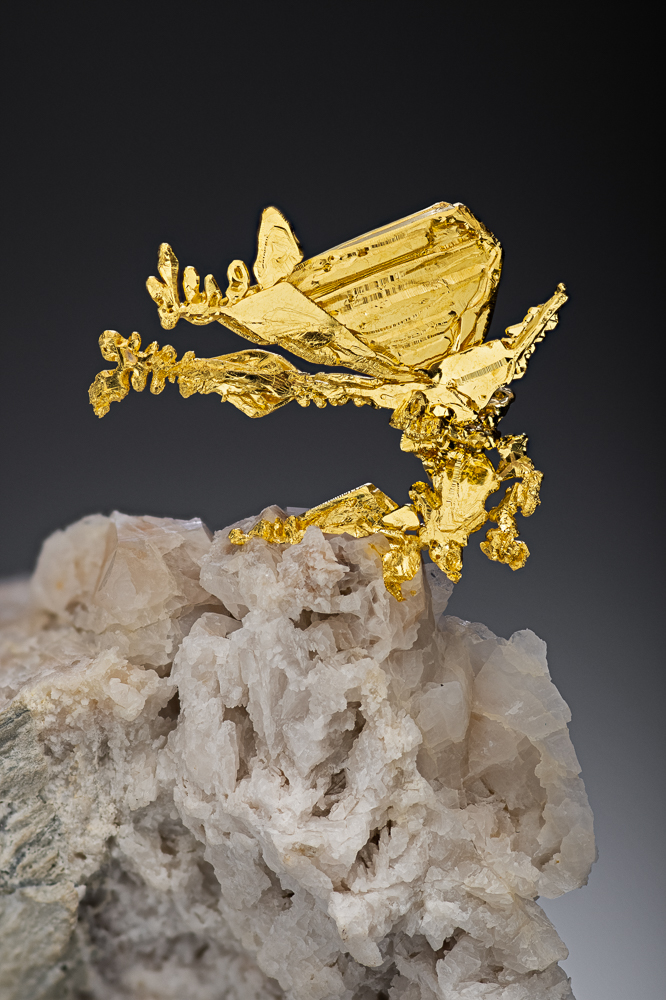
Gold, Colorado Quartz Mine, Mariposa, California – 2.7 cm high
Dave Varabioff specimen, Jeff Scovil photo
Cummengeite, Curuglu workings, Boleo Mine, Santa Rosalia, Baja California Sur, Mexico – 1.8 cm
Peter McGaw specimen, Jeff Scovil photo
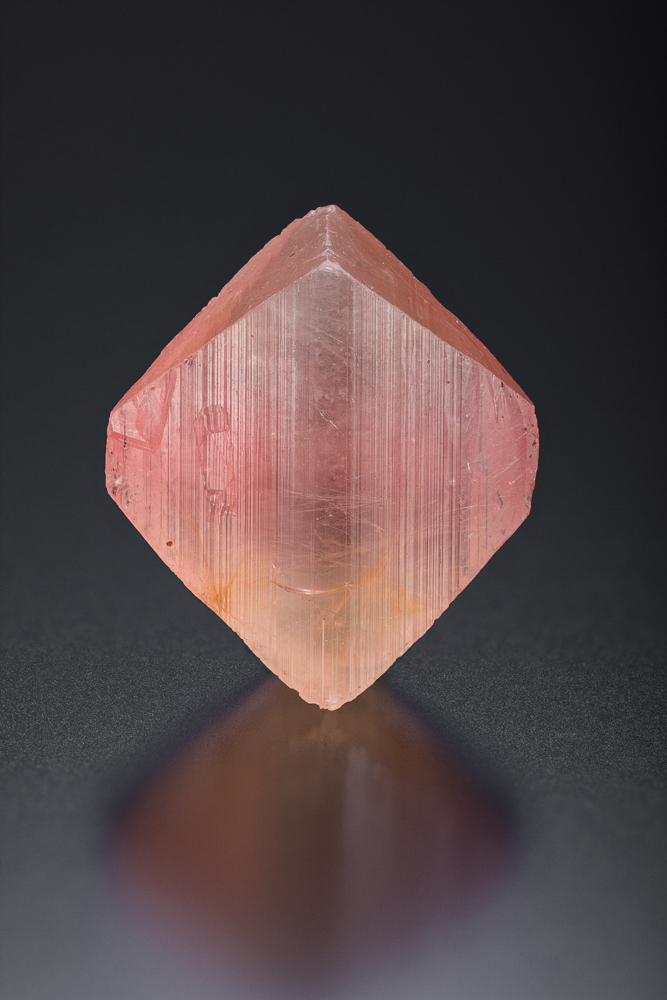 Euclase, Brumado Mine, Bahia, Brazil – 1.7 cm
Euclase, Brumado Mine, Bahia, Brazil – 1.7 cm
Alex Schauss specimen, Jeff Scovil photo
Meta-Autunite, Golconda Mine, Governador Valadares, Doce Valley, Minas Gerais, Brazil – 2cm
Marini & Gobin specimen, Jeff Scovil photo
Epidote, Kharan, Balochistan, Pakistan – 3.2 cm
Ziga Minerals specimen, Jeff Scovil photo
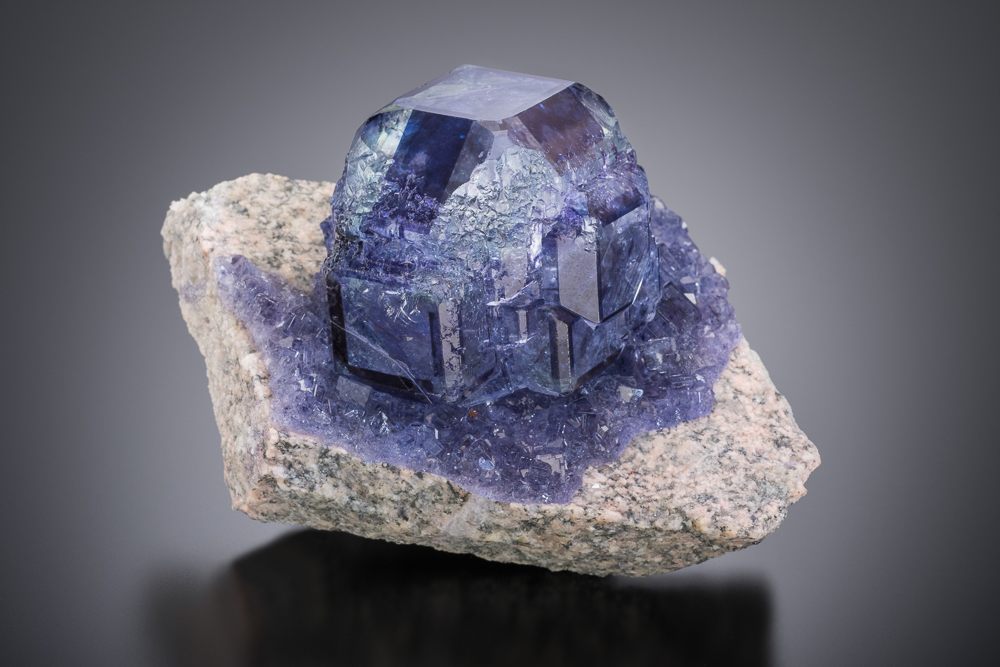
Fluorite, Joe Larkin’s Quarry, Shannapheasteen, Co. Galway, Ireland – 8.5 cm
Dan Weinrich specimen, Jeff Scovil photo
Quartz sceptre, Petersen Mt., Washoe, Nevada – 25.6 cm
Jim and Gail Spann specimen, Jeff Scovil photo
Part II is led by John Betts – he coordinates the program team and assembles all of what’s new into slides. John then presents some of the material, while other team members speak about the contributions they’ve assembled. This year’s team included Jim Nizamoff, Mark Jacobson and me. Part II is great session, bringing together finds and workings from around the world with photographs of localities and specimens. Of course, our goal is to bring new specimens and stories to light!
I won’t go too far into this, as we covered a lot of ground, but here are a few photos to give a little glimpse, and I’ll finish with a particularly interesting story from Mont St. Hilaire.
John covered finds from all over, and he included some rather interesting new finds from Maine:



The new finds I presented for What’s New have mostly already been posted elsewhere here on my website, including under What’s New Blog and New Specimens.
For example, the beautiful new fluorite specimens from Madagascar:
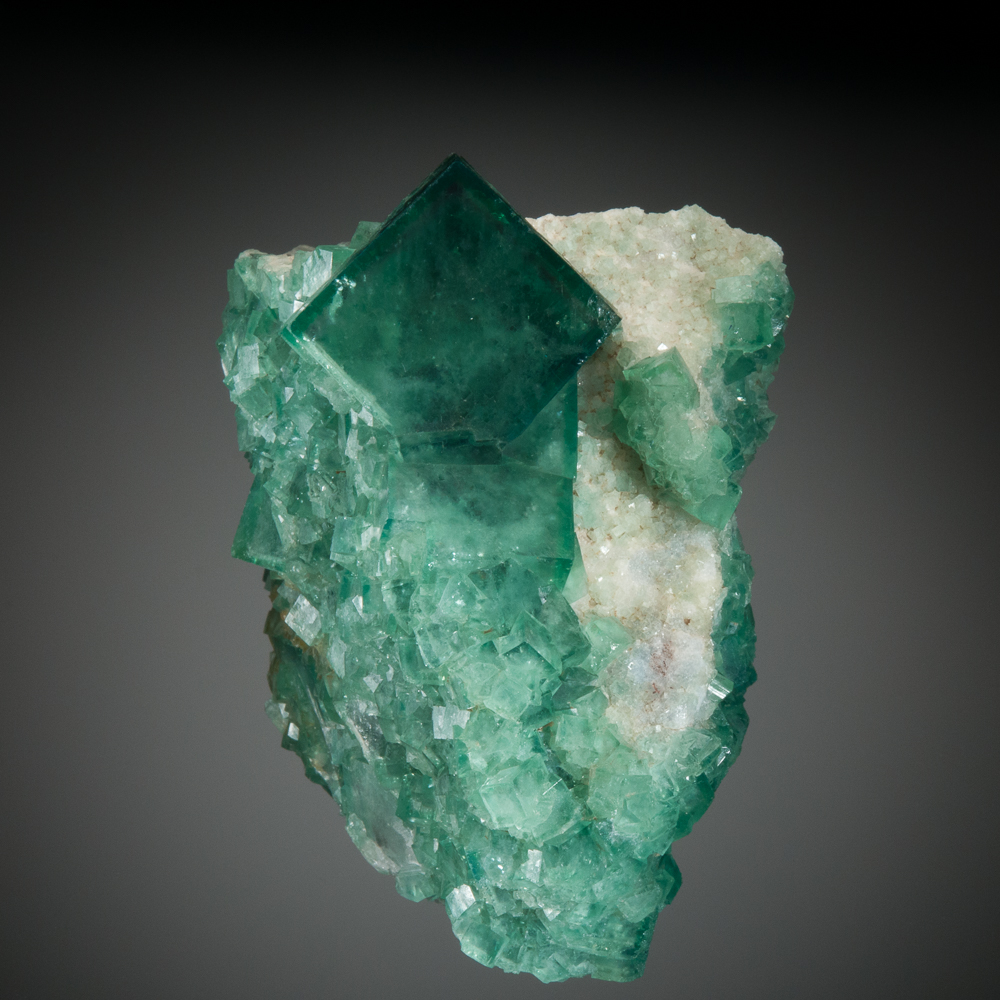
Fluorite, Mandrosonoro, Ambatofinandrahana, Amoron’i Mania, Madagascar – 11.0 cm
Mary Holdgraf specimen
On a very different note – a new identification – we had a great contribution from Lázló Horváth (thank you Les!). This story goes back to the 2013 approval of marshalsussmanite as a new species (an intermediate species between serandite and pectolite) and the subsequent 2014 Rocks and Minerals magazine article about it. Les wondered if perhaps some of the serandite specimens from Mont St. Hilaire might in fact be marshalsussmanite. In cooperation with the Canadian Museum of Nature, a survey of various Mont St-Hilaire serandites was commenced using several techniques, and a number were found to be in the marshallsussmanite range. Notably, one of them was from the major 1981 find, often associated with Ernie Schlichter. Single crystal structure analysis confirmed that the 1981 bladed serandite was marshallsussmanite. However, there’s more to the story…
This single crystal structure analysis also confirmed that the mineral named marshalsussmanite is identical to the mineral schizolite, described from Greenland in 1901 and unnecessarily dropped from the valid minerals list in 1955. There was no official discreditation at the time, because this predated the establishment of IMA. Now, owing to the priority of schizolite, marshallsussmanite has been discredited and the mineral is schizolite.
So where does this leave Mont St-Hilaire serandites? Well, there is no simple answer. It seems that so far, the 1981 Ernie Schlicter-find specimens tested are all schizolite. Initially, it had been thought that perhaps the thin, bladed habit might be reliable as a diagnositc indicator, but this has proven to be too simple and unreliable a conclusion. Ongoing study of specimens is being conducted by Tony Steede at the Royal Ontario Museum lab, and he has found crystals in the thin, bladed habit that are in fact serandite. It seems that the only way to know is to have every specimen fully analyzed. Further discussion of the schizolite story and findings are expected in an upcoming article by Peter Tarassoff in Rocks and Minerals magazine, and also in the highly-anticipated upcoming new book on Mont St-Hilaire (more on that below).
This is a confirmed schizolite:
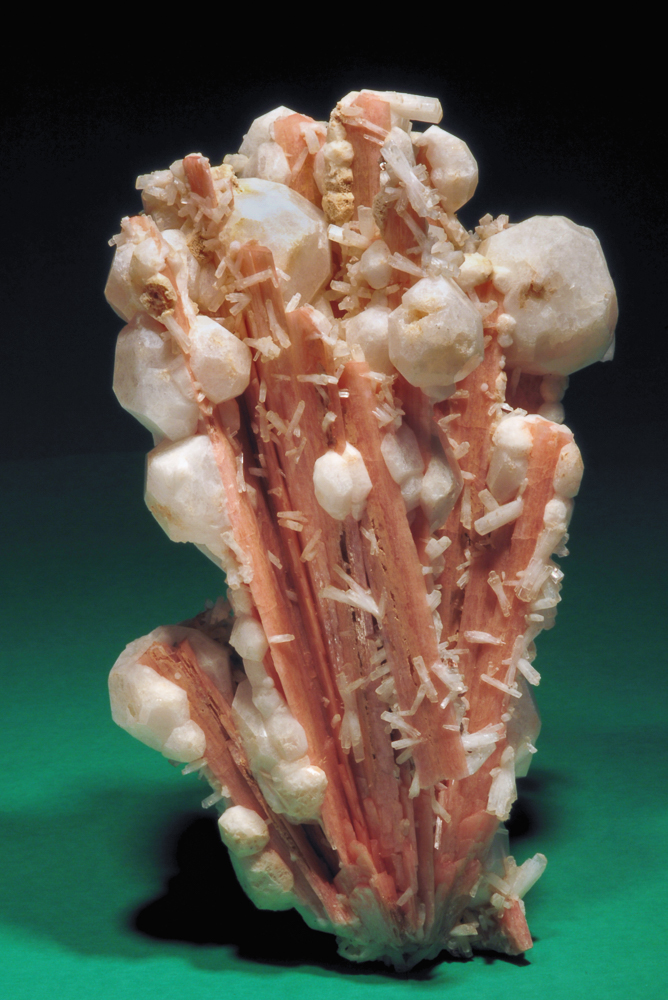
Schizolite with analcime and natrolite, Mont St-Hilaire, Quebec – 18 cm
Laval University specimen, Laszlo Horvath photo
Saturday Afternoon
Saturday afternoon, we began with “Mineral Collection Matters”, by William Severance. Bill has shared specimens from his collection with us in the display room at the Symposium each year for as long as I can remember! He gave a great talk about mineral collecting, illustrated with specimens from his collection. One of my favourite aspects of mineral collecting is visiting mineral friends and going through their collection together, hearing the stories behind each piece. Bill’s talk was very much like that, with provenance of the specimens and other background, lots of collecting wisdom gleaned over the years, and some fun stories. I’ll share the one that was my favourite laugh (and I was certainly not alone):
Bill was visiting with highly-accomplished Tucson collector Jim Blees, and they had been spending time going through Jim’s collection. Bill recalled what Jim said (and we can give a small tip of the cap to Apocalypse Now):
“A great mineral specimen always comes up at the worst possible time. The house needs a new roof. Your wife needs a new washing machine. Your daughter needs braces. At that moment, you’re either a collector or you’re not. Sell the house! Sell the wife! Sell the kid! Buy the rock!“
This talk was a treat visually as well, featuring many of Jeff Scovil’s photos featured in Bill’s chapter in the Mineralogical Record Supplement, Mineral Collections of the American Northeast. (Jul/Aug 2016).
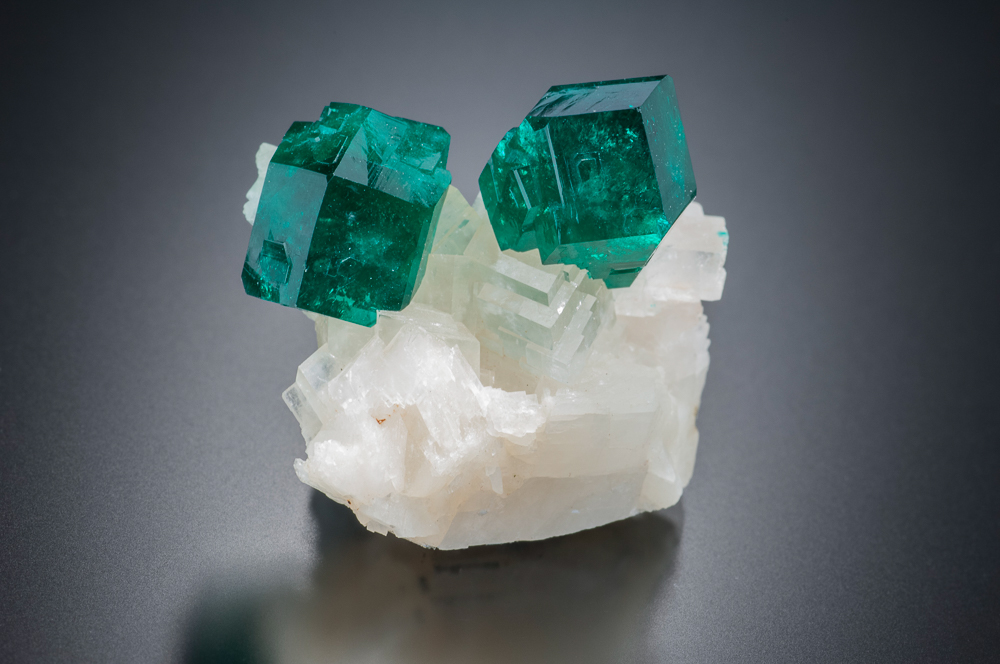
Dioptase on calcite, Tsumeb Mine, Tsumeb, Namibia – 2.7 cm
William Severance collection, Jeff Scovil photo.
Azurite, Tsumeb Mine, Tsumeb, Namibia – 9.5 cm.
William Severance collection, Jeff Scovil photo.
Ex Sid Peters specimen. Included in Julius Zweibel’s McDole
Trophy exhibit (1977). From Marshall Sussman (2003)
Complex calcite twin over calcite phantom on copper, 6.4 cm, from the Copper Falls mine, Owl Creek fissure, Keweenaw County, Michigan.
William Severance specimen, Jeff Scovil photo.
Ex Clarence Bement collection (1900). Ex I. P. Scalisi collection.
From Stuart Wilensky (1999). Pictured in American Mineral Treasures (2008).
To close out our Saturday afternoon, Les Presmyk took the podium. Les has been a generous contributor in many capacities throughout Mineral World, and we were thrilled to have him back in Rochester. For those of you who might not know (or know of) Les, he has a superb collection of Arizona minerals, and has given presentations on a variety of Arizona mineral subjects. On Saturday he gave a talk he had just finished putting together, “Arizona Sulfates”.
I was intrigued by this talk as a subject matter, because when one thinks of Arizona, one does not usually jump to thinking of sulfates. Turns out there are lots of great sulfate minerals in Arizona! Far more species than only he ones that came to mind for me. Here’s just a glimpse (these are classics…):




Spangolite, Czar shaft, Copper Queen Mine, Bisbee, Warren District, Cochise Co., Arizona
Sunday Morning
Sunday we capped off the 46th RMS with two more excellent talks.
Chris Stefano opened with his talk, “Lucius Lee Hubbard: One of the Copper Country’s Greatest Mineral Collectors”. Hubbard was a true Renaissance man, and he was passionate about minerals. Chris told Hubbard’s story with far more than mineral specimens – he included historic photographs and Hubbard’s original correspondence, working with Hubbard’s descendants. The Hubbard collection ultimately contained many exceptional specimens, including superb Michigan copper country specimens, and it was one of the three private collections that formed the foundation for the collection of the A.E. Seaman Mineral Museum of Michigan Technological University.
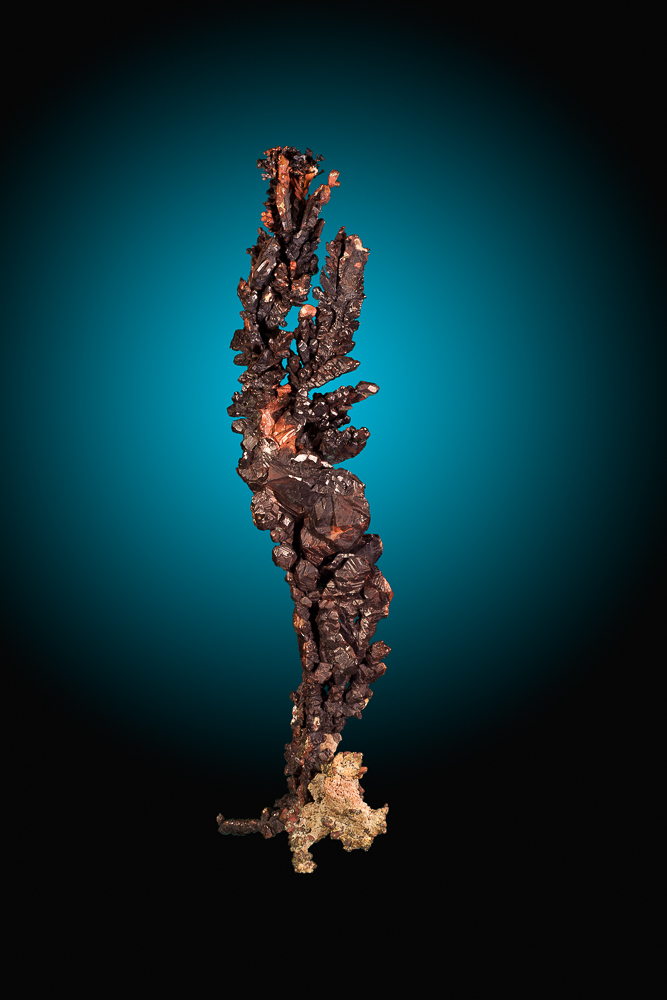
Copper, Keweenaw Peninsula, 23 cm. Michigan Mineral Alliance specimen (UM 1674).
Christopher Stefano photo.
Silver, Cliff Mine, Keweenaw Co., Michigan – 10 cm A.E. Seaman Mineral Museum specimen (LLH 508)
John Jaszczak and Christopher Stefano photo.
And for our grand finale, Les Presmyk presented “Collecting Arizona Minerals: 150 Years of Mining, 100 Years of Statehood, and My 50-Year Journey.” This talk was awesome, featuring historical photos and packed with photos of killer specimens.
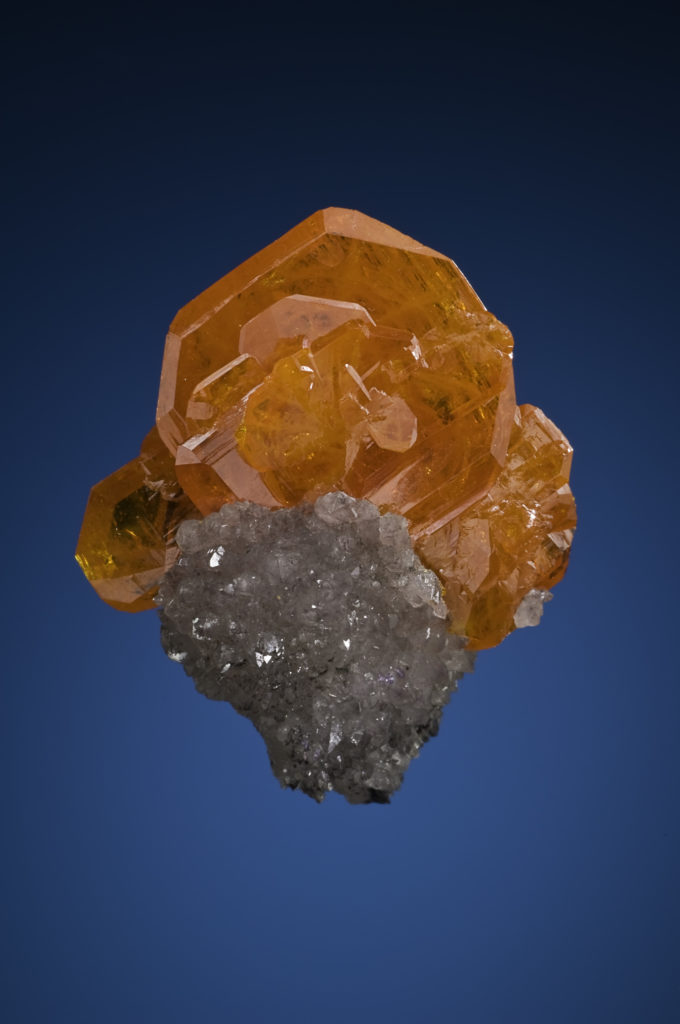
Wulfenite, Red Cloud Mine, Trigo Mountains, La Paz Co., Arizona – 4.3 cm
Les and Paula Presmyk specimen, Jeff Scovil photo.
New Books!
Just a quick mention of three new books that are coming soon and were talked about a lot at the RMS – they are of particular interest to many of the people who attend RMS (and of course many more throughout Mineral World). I can’t wait for my copies of all three! Links for all of these are in the links section at the end of this blog post.
First, the project from George Robinson, Jeff Chiarenzelli and Michael Bainbridge, Minerals of the Grenville Province: New York, Ontario and Quebec should be out literally any day now (it can be ordered through Schiffer Books and will be on amazon… OR… if you will be at the Bancroft Gemboree this year (August 1-4, 2019), there will be a launch and signing, at the Bainbridge Photography booth (#145), and George Robinson will be there for a signing on Saturday, August 3, from 1:00-4:00 pm).
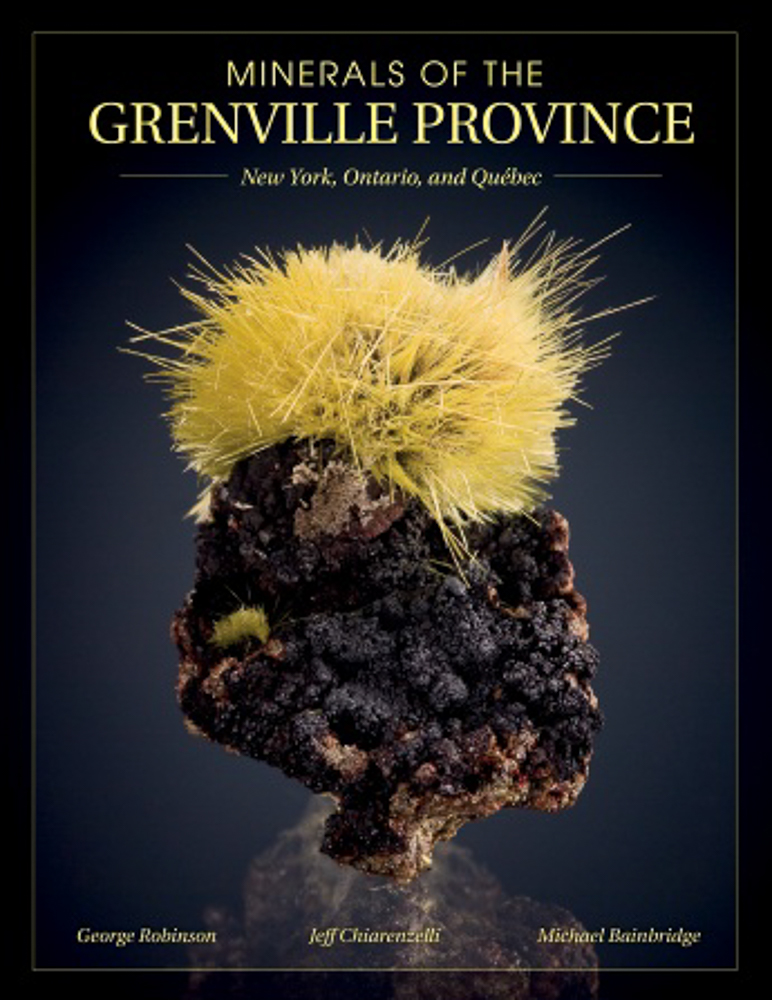
The new book on Mont St-Hilaire is almost here too! Mont Saint-Hilaire: History, Geology, Mineralogy by Lázló Horváth, Robert A Gault, Elsa Pfenninger-Horváth and Glenn Poirier (ed. R.F. Martin) will be released in September 2019.
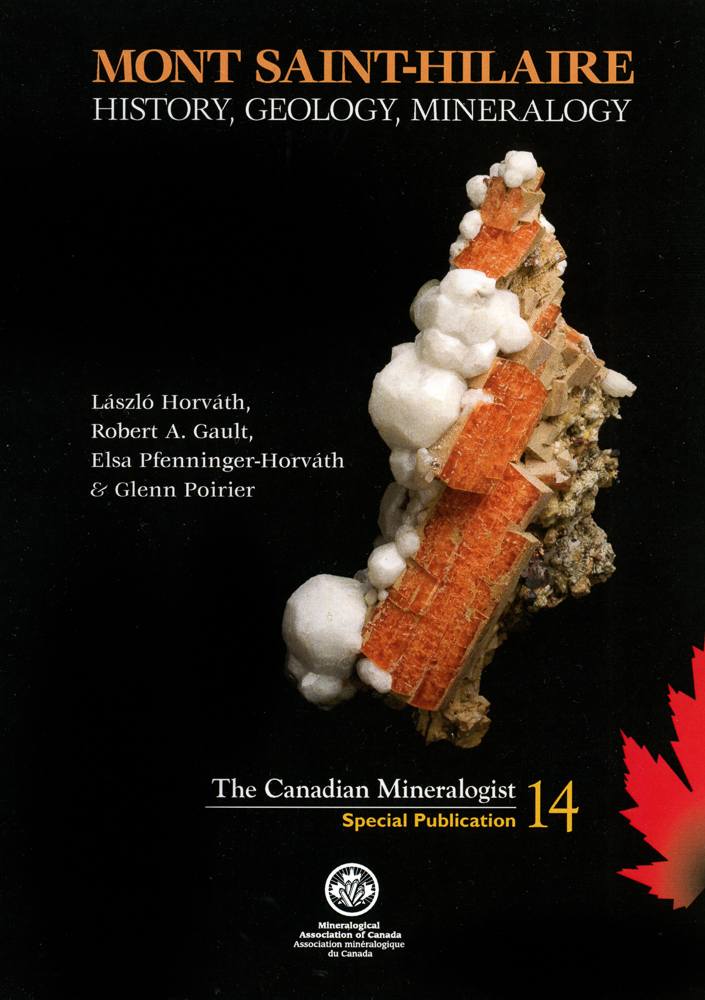
And the third is the highly-anticipated book about Bill Pinch and his collection: The Pinch Collection at the Canadiane Museum of Nature, by Michael Bainbridge (eds. Gloria Staebler and Tom Wilson). It will be published in fall 2019 and the link for pre-orders is in the link section below. Bill was very involved with the preparation of this book, and the collection described has been regarded by many as perhaps the finest private collection ever assembled. With photography by Michael Bainbridge, this will be an amazing work.
Displays
Every RMS, we have great displays in the Exhibit Room and this year was no exception. Some are contributed by museums and many are contributed by collectors attending the RMS.
I say that it was no exception, but it _was_ exceptional in one respect. We have now retrofitted all of the RMS display cases with super new LED lighting. Thanks to Brian McGrath for doing all of the hard work on this – they looked awesome! (A side note, if you are interested in lighting for your own display cases, these are from Graham Sutton, with contact information in the links section below).
Here are a few glimpses from among the many great displays.
Terry Huizing assembled a case of beautiful calcite specimens in support of his talk. Some great eye-candy here!
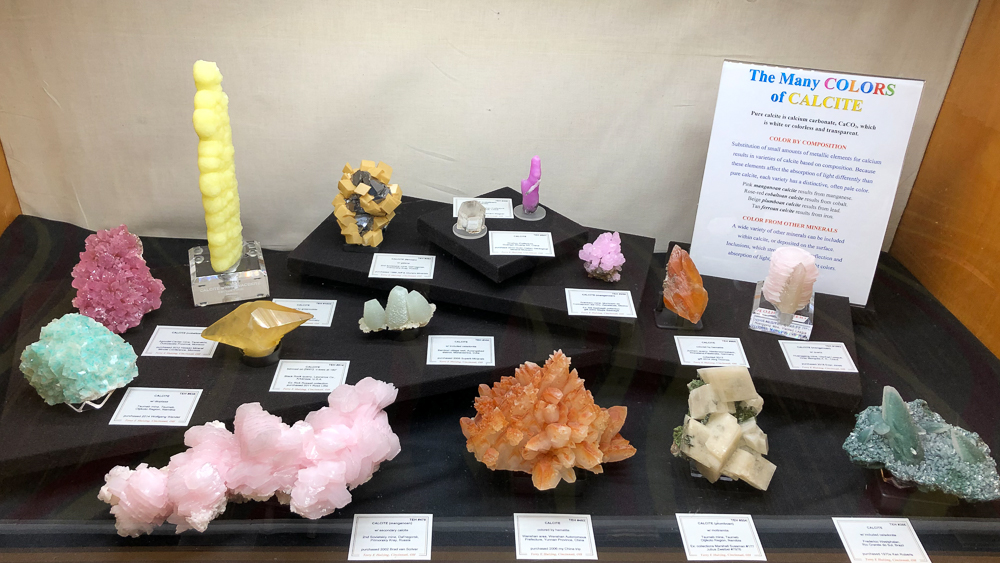
John Betts’s display, “Recent Additions”, included many sweet specimens.
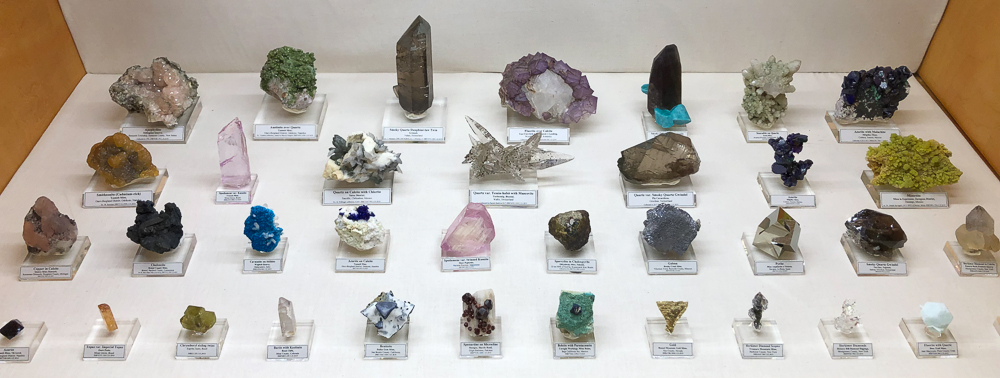
I could have chosen many for a closeup, but I chose this gorgeous chalcocite:
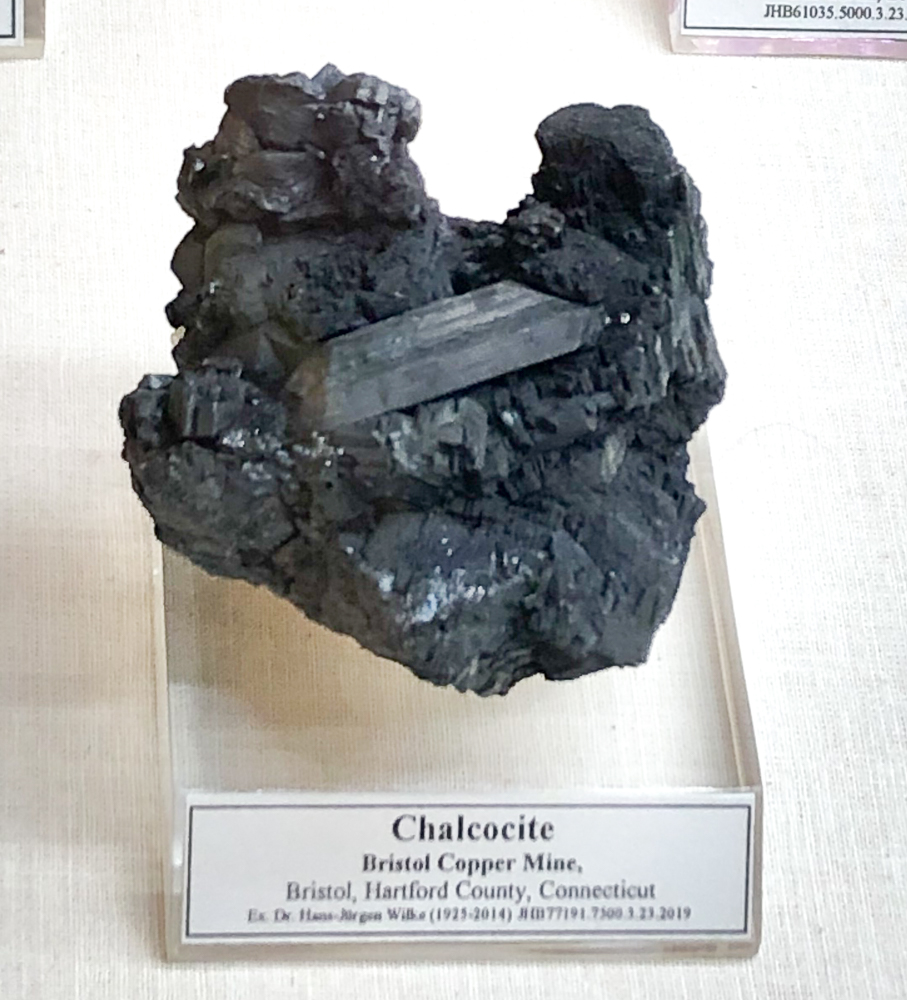
Chalcocite, Bristol Copper Mine, Bristol, Connecticut – 5 cm (crystals to 2.6 cm)
From the private collection of Ex. Dr. Hans-Jürgen Wilke (1925-2014) of Eppertshausen, Germany, No. 193
The Mineralogical & Geological Museum at Harvard University brought a display of great calcite specimens:
Scale: specimen on the right approx. 4 cm.
Canadian collector George Thompson brought a case, “Canadian Quartz”, with many distinctive specimens from localities that are less commonly seen:
Don Dallaire had many excellent specimens in his case dedicated to the Minerals of New Hampshire – I thought this was truly exceptional quality for cordierite:
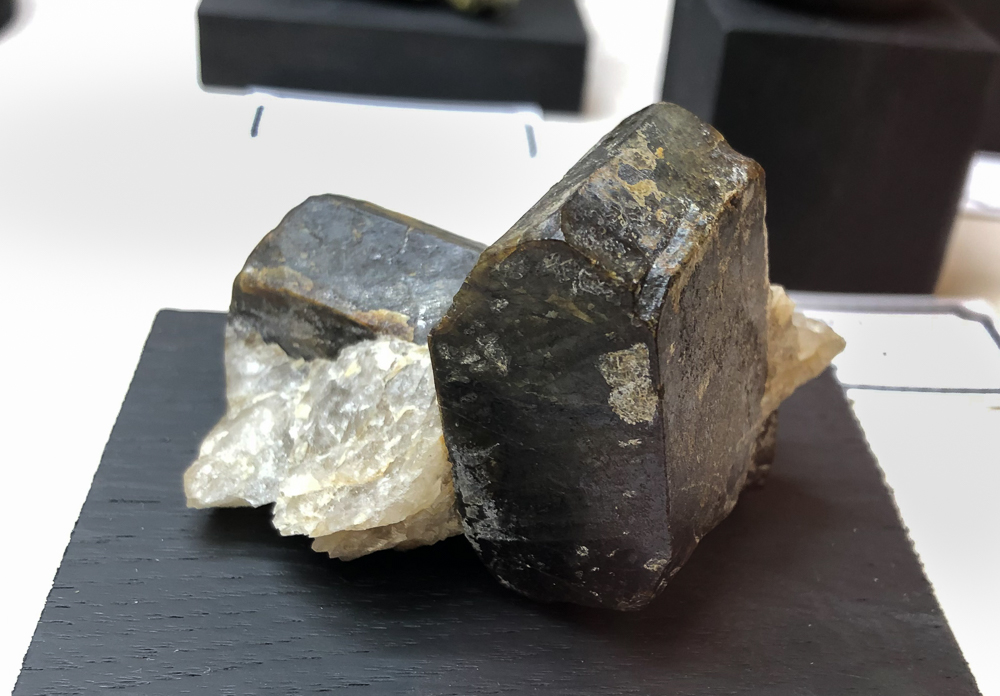
Cordierite, Richmond Soapstone Quarry, Richmond, New Hampshire – approx. 5 cm
Bob Morgan’s case was dedicated to Epitaxy – here’s a great albite on orthoclase specimen:
Scale: approx. 10 cm tall
Carl Francis brought a case of killer quartz specimens from Switzerland:
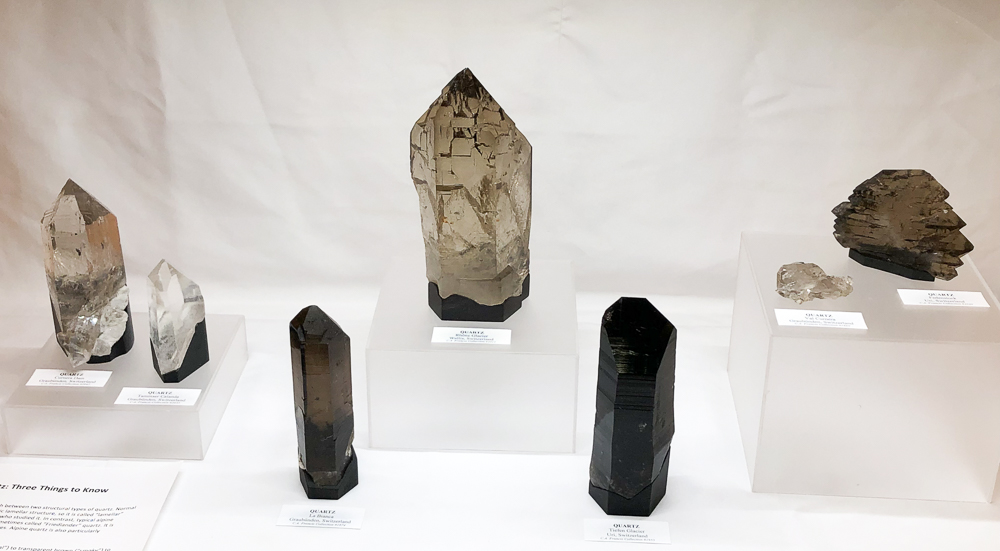
A couple of close-up photographs from Carl’s case – these are wonderful crystals:
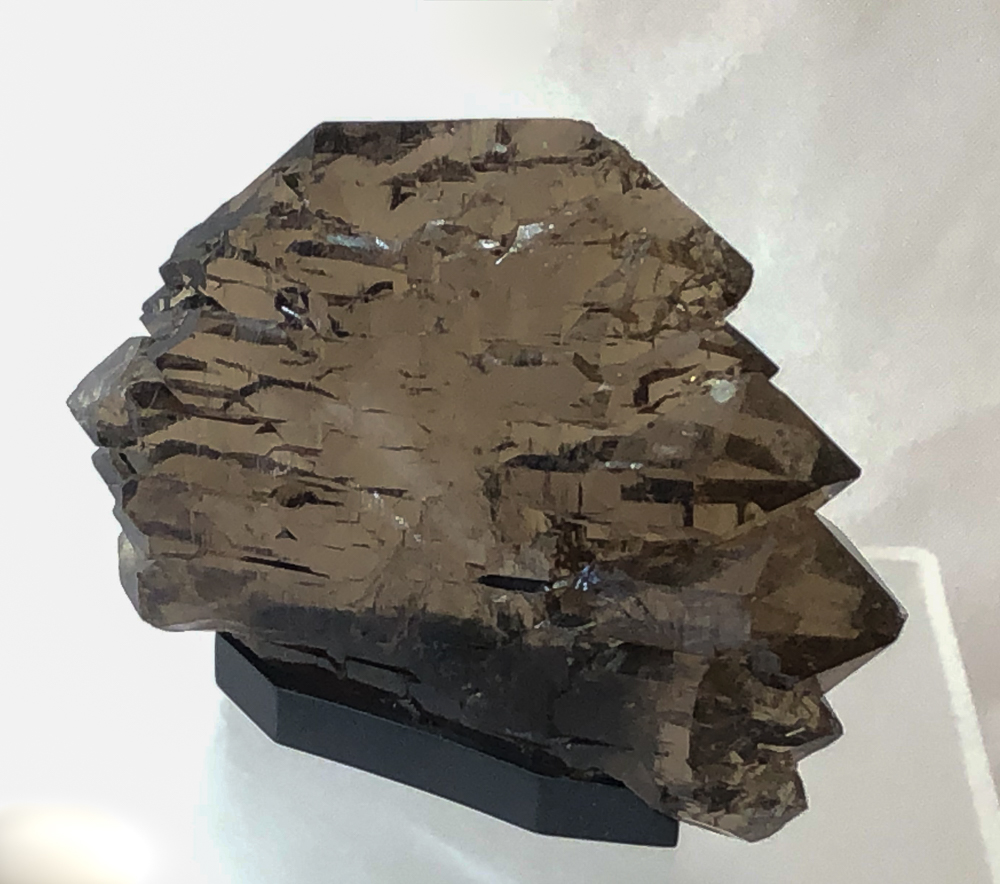
Quartz gwindel, Fedenstock, Uri, Switzerland – approx. 9 cm
Quartz, Rhone Glacier, Wallis, Switzerland – approx. 25 cm
Fun
As I write every year in my RMS posts, a lot of the best of Rochester occurs beyond the talks – in the halls, over meals, and on the 4th floor (the dealer floor, open when talks are not on). Socializing continues well into the morning hours each night, and includes a few traditions – among others, the not-to-be-missed Saturday night mineral songs with David Joyce. (I assume most have heard Dave’s mineral collecting and mining tunes, but if not, I’m including a link below). Somehow, I had so much fun that I forgot to be taking pictures to include here. Oops.
We have a lot of fun together at Rochester – and if you’ve never been, I hope you’ll come next year and be a part of it with us!
RMS 2020
We have another great lineup of speakers shaping up – the dates are April 23-26, 2020. Our 2020 speakers will include Calvin Anderson, John Betts, David Joyce, Vladimir Klipov, Inna Lykova, Harold Moritz, Herwig Pelckmans, Tony Potucek, Jeff Scovil and Terry Wallace.
RMS on Facebook
The Rochester Mineralogical Symposium is now on Facebook (here) (thank you Michael Bainbridge!). Our Facebook page is one good way to keep up with us – feel free to visit and give it a Like!
Until Next Year…
The Rochester Symposium is a great event, that has seen many of Mineral World’s most prominent names as contributors. At the same time, the Symposium continues to embrace contributions from all levels in mineral collecting – it simply would not be what it is without everyone who contributes.
Thank you to all of our amazing speakers this year! And thanks to our speakers and photographers for all of your help with photos to share through this report.
Of course, the Symposium could literally not happen without the dedicated efforts of the team who put it together – particularly Carl Miller, our registrar. Carl is The Man. Sarah Hanson does it all to put together the technical session and coordinate the abstracts. Tom White is our technical coordinator, insuring that all the presentations and recordings run without a hitch. Many thanks to all on our committee and those helping in the background year-round, including John Betts, Steve Chamberlain, Dan Imel, Betty Fetter, Carl Francis, Bruce Gaber, Brian McGrath, Bob Morgan, Susan Robinson, and Quintin Wight. Thanks to Paul Dudley for technical and website support. We also have a host of people helping us at the RMS and behind the scenes, including Mike Avery, Michael Bainbridge, John Diaz, Charlene Freundlich, Fred Haynes, Mark Jacobson, Jim Nizamoff, Ed Smith, Laurie Steele Sperber, Dan Sperber, Gloria Staebler, Lee Tutt, and Ken Wolf I sure hope I haven’t missed anyone!
Links and References
If you are seeking links for anything mentioned above, some of these may be of interest:
Our amazing professional mineral photographers (who – of course – take photos of private collection specimens for individual collectors): Jeff Scovil and Michael Bainbridge
David K. Joyce has written – and plays and sings, of course – the soundtrack for so many great times in minerals. The mineral tunes are available on itunes (enter David K Joyce in your itunes search window) or the CD is available from Dave – if you’d like to hear them, here is the page where you can listen.
If you are interested in display lights for your collection, Graham Sutton’s company, It’s West Display & Lighting, has great lighting solutions. We love the new RMS display case lighting.
Here are links to the books:
Minerals of the Grenville Province (Click here) Or, as mentioned above, come to the Bancroft Gemboree and visit Michael Bainbridge. [NB as of the time of publishing this post, the only actively-shipping listing is the direct link through the publisher]
Mont Saint-Hilaire (Click here) [NB at the time of publishing this post, SP 14, Mont Saint Hilaire, was not yet listed at this page, but the book launches in September and it will be at this link!]
The Pinch Collection at the Canadian Museum of Nature (Click here)
When they are online, the 46th RMS Program Notes will be posted online here.


